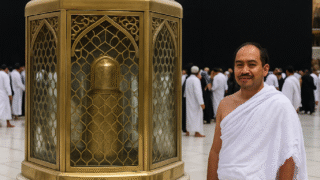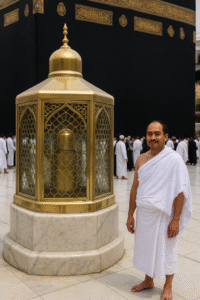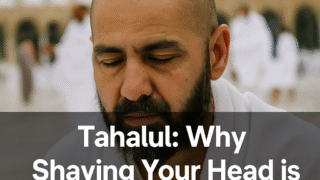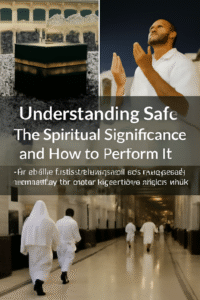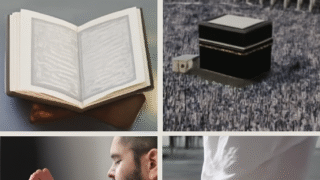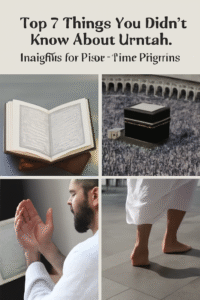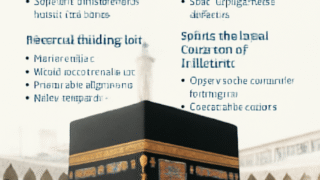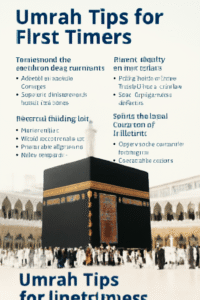Praying at Maqam Ibrahim: The Spiritual Significance and How to Perform It
Introduction: Understanding Maqam Ibrahim
Praying at Maqam Ibrahim is a spiritual act that brings pilgrims closer to Allah. This sacred site, located in Masjid al-Haram near the Kaaba, is tied to the legacy of Prophet Ibrahim and his unwavering devotion to Allah. By praying here, pilgrims connect to the rich history and deepen their faith. This article will guide you through the significance of this prayer and how to perform it properly.
1. What is Maqam Ibrahim?
Maqam Ibrahim refers to a stone that was used by Prophet Ibrahim (Abraham) when building the Kaaba. The stone is encased in a glass structure, and pilgrims can perform prayers near it as part of their **Hajj** and **Umrah** rituals. This site is sacred as it represents the devotion and submission of Prophet Ibrahim to Allah.
2. The Spiritual Significance of Maqam Ibrahim
Praying at Maqam Ibrahim is not just a physical act, but it carries deep spiritual significance:
- Connection to the Prophets: By praying at Maqam Ibrahim, you reflect on the legacy of Prophet Ibrahim’s faith and trust in Allah.
- Humility and Submission: Shifting focus to the spiritual aspects of Hajj and Umrah, this prayer symbolizes your submission to Allah, as Ibrahim did in his time.
- A Symbol of Purification: The act of praying near Maqam Ibrahim serves as a purification for the pilgrim, allowing them to spiritually cleanse themselves and seek forgiveness from Allah.
3. How to Perform the Prayer at Maqam Ibrahim
Performing the prayer at Maqam Ibrahim involves a few simple but important steps:
- Step 1: Approach Maqam Ibrahim: After completing your Tawaf, proceed to Maqam Ibrahim, which is located near the Kaaba. You will find the stone in a small glass structure.
- Step 2: Make Du’a: Stand in front of Maqam Ibrahim, facing the Kaaba, and make personal supplications (du’a). Ask Allah for forgiveness, mercy, and guidance during this sacred moment.
- Step 3: Perform Two Rak’ahs: After making du’a, perform two rak’ahs of prayer. You can pray anywhere around the Maqam Ibrahim station. It is common to recite **Surah Al-Kafirun** in the first rak’ah and **Surah Al-Ikhlas** in the second rak’ah.
- Step 4: Focus on Spiritual Connection: While praying, maintain your focus on the significance of the ritual. Reflect on the actions of Prophet Ibrahim and the lessons of obedience and faith.
4. The Spiritual Benefits of Praying at Maqam Ibrahim
Praying at Maqam Ibrahim offers numerous spiritual benefits:
- Increased Forgiveness: Prayers offered at this sacred site are believed to carry a higher chance of being accepted by Allah. It’s an opportunity to ask for forgiveness and spiritual purification.
- Strengthening of Faith: Praying near the stone of Prophet Ibrahim strengthens the pilgrim’s faith and enhances the connection with Allah. It also reinforces the values of obedience, submission, and humility.
- Reaffirming the Legacy of Ibrahim: By standing at the same place where Prophet Ibrahim stood, pilgrims reconnect with the story of his dedication and sacrifices for Allah.
5. Common Mistakes to Avoid When Praying at Maqam Ibrahim
While performing the prayer at Maqam Ibrahim is simple, here are some common mistakes pilgrims should avoid:
- Rushing the Prayer: Don’t rush through the prayer at Maqam Ibrahim. Take your time to reflect, make sincere supplications, and focus on the spiritual significance of the moment.
- Not Facing the Kaaba: It is recommended to face the Kaaba when performing the prayer, though it is not strictly required. However, facing the Kaaba enhances the connection to the ritual.
- Neglecting Du’a: Many pilgrims focus only on the physical act of the prayer and forget the importance of making du’a. Always remember to pray from the heart and seek Allah’s blessings.
6. Conclusion: The Importance of Praying at Maqam Ibrahim
Praying at Maqam Ibrahim is a powerful act that connects pilgrims to the legacy of Prophet Ibrahim, deepens their spiritual journey, and strengthens their faith. It’s a moment to reflect on the sacrifices made by the Prophets and to make du’a for personal guidance. By performing this prayer correctly, pilgrims can complete their Hajj and Umrah with a renewed sense of **spirituality** and **devotion** to Allah.
Call to Action: Ready to deepen your spiritual journey? Click [here](https://bismillahmekah.blogspot.com) to explore more about **Hajj**, **Umrah**, and the essential rituals that bring pilgrims closer to Allah.
